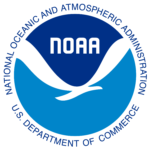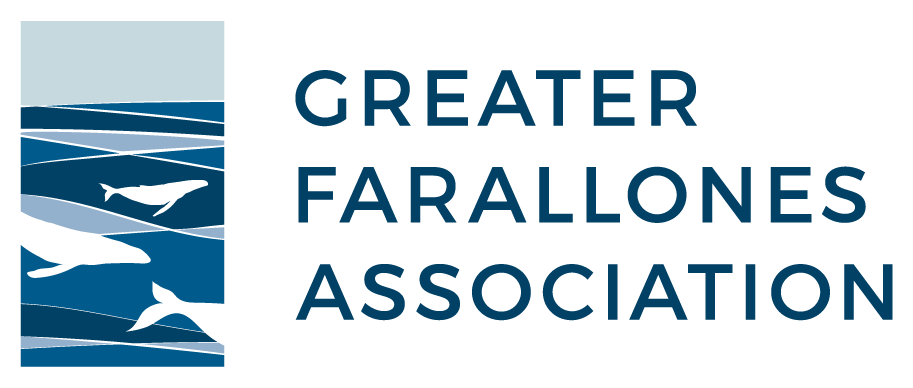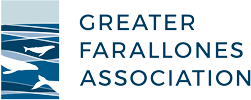Workshop Series
Identifying Research Needs and Planning for Effective Implementation
Climate-related changes in oceanographic conditions such as marine heatwaves and persistent warming are impacting where whales feed and spend their time, often increasing conflict with human activity including transiting container ships and fishing activity, exacerbating these leading causes of mortality in vulnerable and reduced whale populations. Marine protected areas (MPAs), Indigenous-led conservation approaches and areas, and other effective conservation measures (OECMs), play a critical role in advancing stewardship, conservation and recovery of whale species by effectively reducing human impacts to whales. However, because whales are highly migratory, effective conservation requires international cooperation and the development of robust networks that are working from aligned goals and objectives.
In January 2024, the Association in partnership with Greater Farallones and Cordell Bank National Marine Sanctuaries and with support from the Lenfest Ocean Program, California Marine Sanctuary Foundation, and the Commission for Environmental Cooperation, hosted a virtual workshop to convene protected area managers, policymakers, and conservation leaders from around the world. View the virtual workshop proceedings. Video recordings of the virtual workshop are available below. Topics included:
- Migratory corridors of endangered whales
- Predicted climate impacts on whale distribution and density
- Global hot spots for ship strike risk
- Measures and resources to reduce ship strike risk
In September 2024, a follow up in-person workshop will convene government representatives from across the Eastern Pacific Basin, Canada to Colombia, to develop a strategy for international collaboration on ship strike science and mitigation. Discussions will address the following key questions:
- How can MPAs conserve whales more effectively as whales move across national and international waters?
- What science and knowledge gaps exist as roadblocks to further protecting whales in a changing climate?
- What areas are of greatest concern in terms of ship strike risk to whales in the Eastern Pacific? How protected are whales in these areas?
- What degree of risk reduction could be achieved by added whale conservation measures like vessel speed regulations or re-routing ship traffic? What is the intersection between international designations/protections and MPAs, and how can these designations bring flexibility or avenues for protection?
- What is the most effective structure for continued collaboration on this topic across countries in the Eastern Pacific Basin?
The goal of this workshop series is to strengthen partnerships across MPAs, Indigenous areas, and OECMS to set the stage for an effective network of protected areas and conservation measures that protect and conserve whales in a changing climate, with particular focus on ship strike impacts.

Virtual Workshop Recordings
Protección de las ballenas en un contexto de cambio climático mediante la colaboración de AMP
Identificación de las necesidades de investigación y planificación en favor de una implementación eficaz
17 a 19 de enero de 2024, 8:00 a 12:00 horas (tiempo del Pacífico: GMT-8)
Las modificaciones en las condiciones oceanográficas como resultado del cambio climático —por ejemplo, las olas de calor marinas y el calentamiento persistente— están afectando los sitios donde las ballenas se alimentan y pasan su tiempo, incrementando de tal modo los conflictos con las actividades humanas como el tránsito de buques de carga y la pesca, acentuándose las principales causas de mortalidad de las poblaciones, de por sí ya vulnerables y reducidas, de ballenas. Las áreas marinas protegidas (AMP) y las áreas sujetas a estrategias y prácticas de conservación y protección gestionadas por comunidades indígenas desempeñan —junto con otras medidas de conservación efectivas— un papel fundamental en el impulso de la gestión, preservación y recuperación de las especies de ballenas, pues reducen de manera exitosa el impacto que en ellas tienen las actividades humanas. Sin embargo, en virtud de la naturaleza altamente migratoria de las ballenas, se requiere de una efectiva cooperación internacional y el establecimiento de redes sólidas de trabajo con objetivos y metas comunes.
Con apoyo de la iniciativa Lenfest Ocean Program, este taller tiene como objetivo fortalecer las asociaciones e interacción entre AMP, áreas indígenas y otras medidas de conservación efectivas, a fin de sentar las bases para la creación de una red eficaz de áreas protegidas y medidas de conservación que protejan y conserven a las ballenas en climas cambiantes, con un énfasis particular en los impactos de las colisiones entre embarcaciones y ballenas. La Comisión para la Cooperación Ambiental proporcionará el servicio de interpretación inglés-español en directo.
Entre los temas a tratar en el taller figuran:
- Corredores migratorios de ballenas en peligro de extinción
- Impacto pronosticado del cambio climático en la distribución y densidad de las poblaciones de ballenas
- Puntos críticos de mayor riesgo de colisión con embarcaciones a escala mundial
- Medidas y recursos para reducir el riesgo de colisión con embarcaciones
Este taller se dirige a administradores y colaboradores de áreas protegidas, líderes indígenas que participan en iniciativas de conservación y responsables de la definición de políticas en América del Norte y Centroamérica, y les permitirá conocer e intercambiar perspectivas y estrategias de gestión aplicadas en todo el mundo.
Agradecemos de antemano su participación, para lo cual le sugerimos reservar las fechas indicadas. En breve distribuiremos un enlace de registro, así como un orden del día que incluirá información sobre los ponentes invitados.




Thank you to our project funders and contributors!




